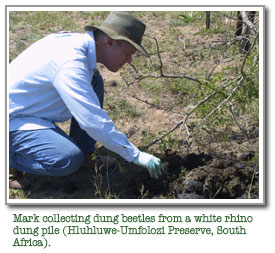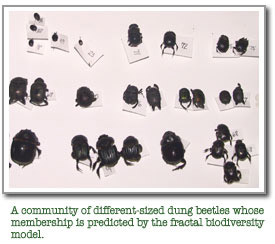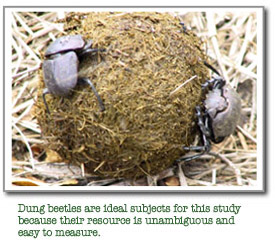Fractal geometry of nature and biodiversity
 Ecologists have long known that the number of species found in a particular area is determined in part by the structural complexity or “heterogeneity” of the habitat and resources used by organisms. However, their poor understanding of why left them with no ability to predict how much heterogeneity would lead to how many species. In addition, theories predicting species richness largely ignored the important role of spatial scale, that is the scale of the observer and scale at which organisms perceive the environment. There is increasing evidence that many, if not most, spatial patterns in nature are fractal, that is, they exhibit similar statistical patterns across several orders of magnitude in scale of observation. This allows heterogeneity to be described with very simple mathematical relationships that explicitly account for the scale of organisms and observers.
Ecologists have long known that the number of species found in a particular area is determined in part by the structural complexity or “heterogeneity” of the habitat and resources used by organisms. However, their poor understanding of why left them with no ability to predict how much heterogeneity would lead to how many species. In addition, theories predicting species richness largely ignored the important role of spatial scale, that is the scale of the observer and scale at which organisms perceive the environment. There is increasing evidence that many, if not most, spatial patterns in nature are fractal, that is, they exhibit similar statistical patterns across several orders of magnitude in scale of observation. This allows heterogeneity to be described with very simple mathematical relationships that explicitly account for the scale of organisms and observers.
 I use fractal geometry in just this way to develop a theory of species richness that accounts for competitive coexistence for resources and habitats that exhibit statistical spatial similarity across scales of observation. This approach has yielded models of optimal foraging for non-randomly distributed resources, species richness for “guilds” of species that use the same resources, models of the growth of populations using fragmented habitats (metapopulations), the use of space by individual animals of different body size (home ranges), and the effects of habitat fragmentation on species richness.
I use fractal geometry in just this way to develop a theory of species richness that accounts for competitive coexistence for resources and habitats that exhibit statistical spatial similarity across scales of observation. This approach has yielded models of optimal foraging for non-randomly distributed resources, species richness for “guilds” of species that use the same resources, models of the growth of populations using fragmented habitats (metapopulations), the use of space by individual animals of different body size (home ranges), and the effects of habitat fragmentation on species richness.
 A wide variety of new problems await to be solved including:
A wide variety of new problems await to be solved including:
- How competition for similar resources interacts with limits to the ability of individual organisms to colonize particular clusters of habitat,
How species richness changes with the area sampled by an observer, - How the mechanisms controlling species richness (competition, disturbance, colonization and extinction) change with the scale of observation, and
- How the relative abundance of species, and their associated species richness, change with the body size of organisms.
In addition to this theoretical work, I plan to explore the community ecology of dung beetles in South Africa. Communities of these beetles utilize a range of different size and quality patches of dung of different ungulate species, and are comprised of many species that vary 4 orders of magnitude in body mass. Because their resource, dung, is unambiguous and easily presented in patches of different size and quality, dung beetles and dung represent an ideal system for testing the predictions of the theoretical models.
Selected Related Publications:
Ritchie, M.E. 2002. Competition and coexistence in mobile animals. Pages 127-141 In: Sommer, U. and B. Worm (editors), Competition and coexistence. Springer, Berlin.
Haskell, J.H., M.E. Ritchie, and H.Olff. 2002. Fractal geometry predicts varying body size scaling relationships for mammal and bird home ranges. Nature 418: 527-530. [PDF]
Pitt, W.C. and M.E. Ritchie. 2002. Influence of prey distribution on the functional response of lizards.Oikos 96:157-163.
Olff, H. and M.E. Ritchie. 2002. Fragmented nature: consequences for biodiversity. Landscape and Urban Planning 58: 83-92.
Ritchie, M.E. and H. Olff. 1999. Spatial scaling laws yield a synthetic theory of biodiversity. Nature 400: 557-560. [PDF]
Ritchie, M.E. 1998. Scale-dependent foraging and patch choice in fractal environments. Evolutionary Ecology 12: 309-330.
Ritchie, M.E. 1997. Population dynamics in a landscape context: sources, sinks, and metapopulations. Pages 160-184 In Bissonette, J.A. (ed.). Wildlife and Landscape Ecology, Springer, New York.
